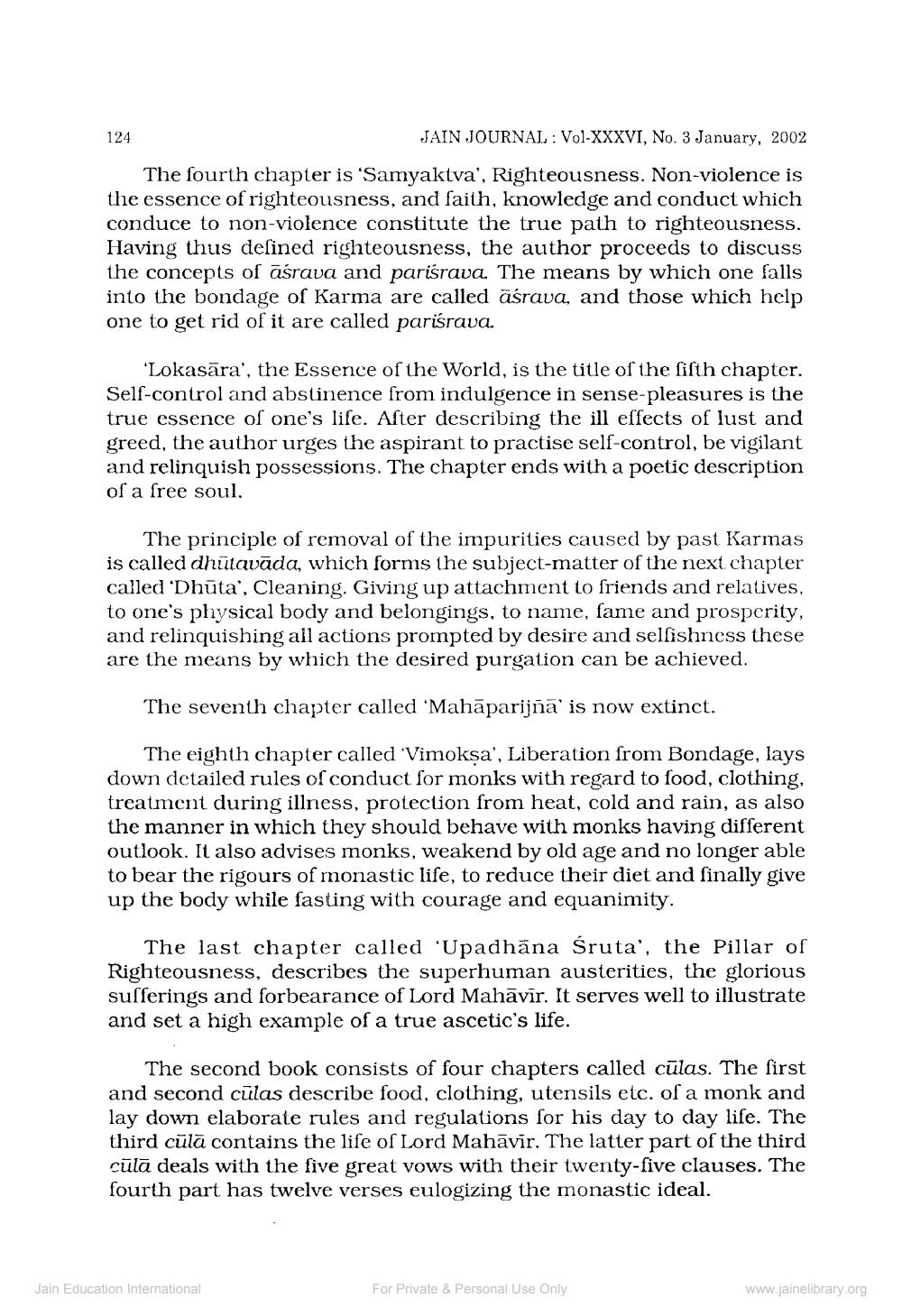________________
124
JAIN JOURNAL: Vol-XXXVI, No. 3 January, 2002
The fourth chapter is 'Samyaktva', Righteousness. Non-violence is the essence of righteousness, and faith, knowledge and conduct which conduce to non-violence constitute the true path to righteousness. Having thus defined righteousness, the author proceeds to discuss the concepts of asrava and parisrava. The means by which one falls into the bondage of Karma are called äśrava, and those which help one to get rid of it are called parisrava.
'Lokasara', the Essence of the World, is the title of the fifth chapter. Self-control and abstinence from indulgence in sense-pleasures is the true essence of one's life. After describing the ill effects of lust and greed, the author urges the aspirant to practise self-control, be vigilant and relinquish possessions. The chapter ends with a poetic description of a free soul.
The principle of removal of the impurities caused by past Karmas is called dhutavāda, which forms the subject-matter of the next chapter called 'Dhuta', Cleaning. Giving up attachment to friends and relatives, to one's physical body and belongings, to name, fame and prosperity, and relinquishing all actions prompted by desire and selfishness these are the means by which the desired purgation can be achieved.
The seventh chapter called 'Mahāparijñā' is now extinct.
The eighth chapter called 'Vimokṣa', Liberation from Bondage, lays down detailed rules of conduct for monks with regard to food, clothing, treatment during illness, protection from heat, cold and rain, as also the manner in which they should behave with monks having different outlook. It also advises monks, weakend by old age and no longer able to bear the rigours of monastic life, to reduce their diet and finally give up the body while fasting with courage and equanimity.
The last chapter called 'Upadhana Śruta', the Pillar of Righteousness, describes the superhuman austerities, the glorious sufferings and forbearance of Lord Mahavir. It serves well to illustrate and set a high example of a true ascetic's life.
The second book consists of four chapters called cūlas. The first and second culas describe food, clothing, utensils etc. of a monk and lay down elaborate rules and regulations for his day to day life. The third culă contains the life of Lord Mahavir. The latter part of the third cūlā deals with the five great vows with their twenty-five clauses. The fourth part has twelve verses eulogizing the monastic ideal.
Jain Education International
For Private & Personal Use Only
www.jainelibrary.org




